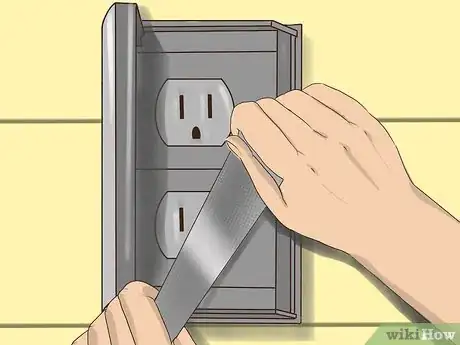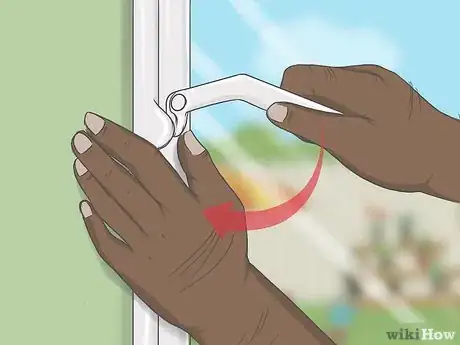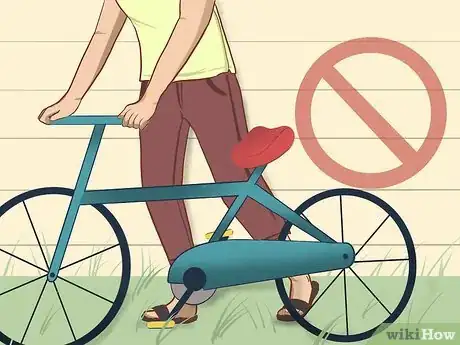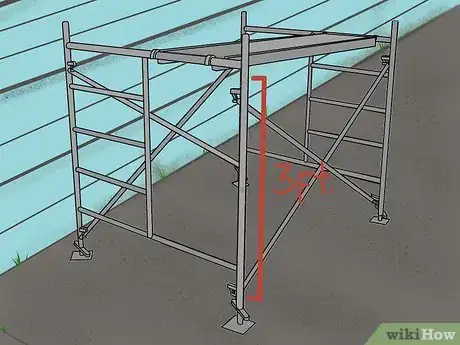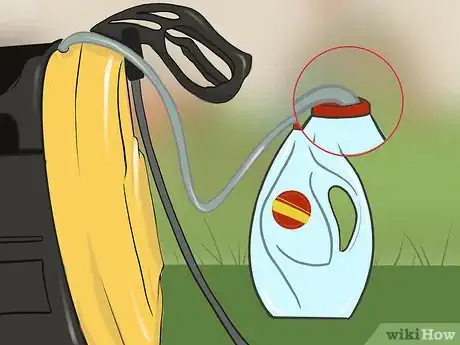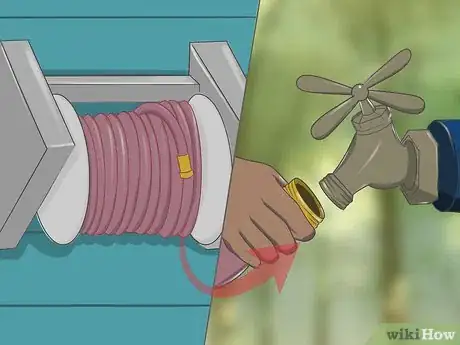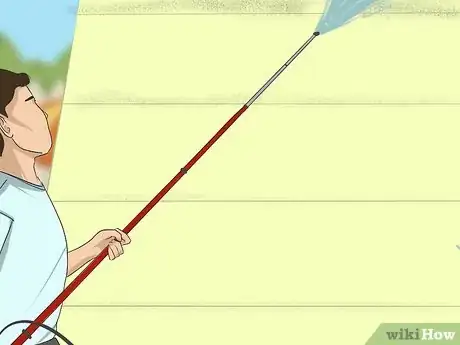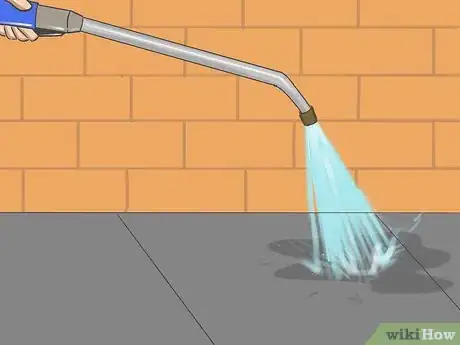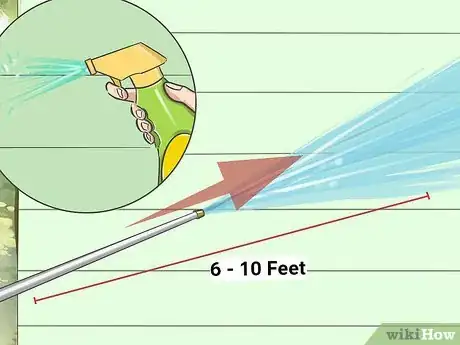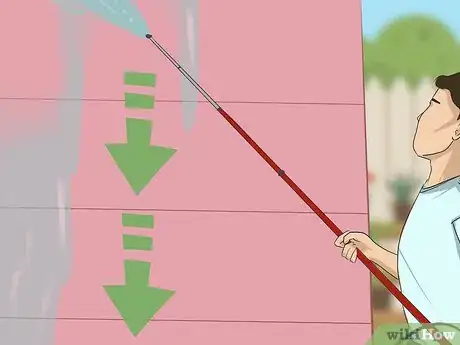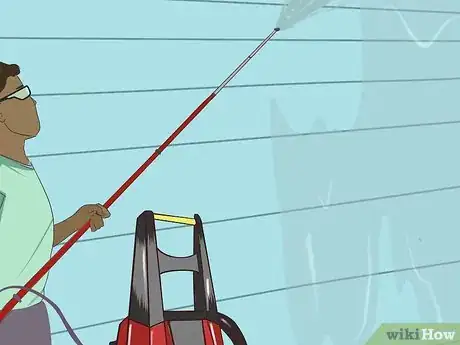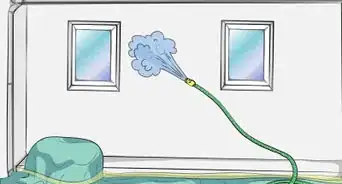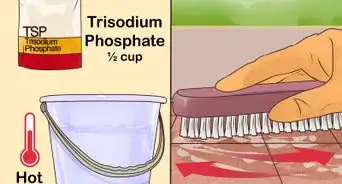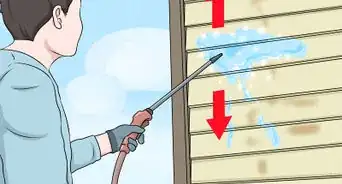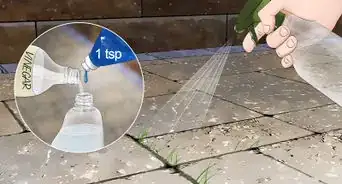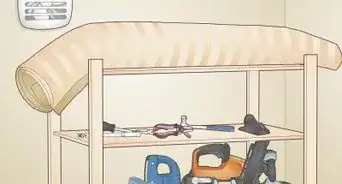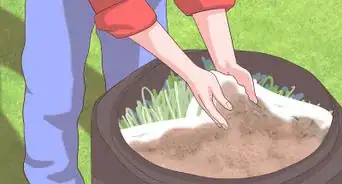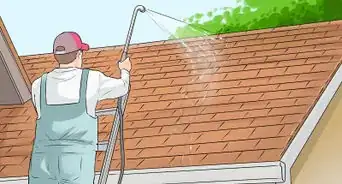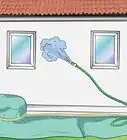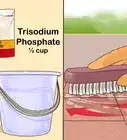X
This article was co-authored by Ben Barlow. Ben Barlow is a Window Cleaning Specialist and the Owner of Barlow Window Bros based in Provo, Utah. Ben specializes in window and gutter cleaning, power washing, and Christmas light installation. He studied at Brigham Young University.
This article has been viewed 37,617 times.
Power washing is a great way to brighten the exterior of a home in an efficient and cost-effective manner. This treatment helps remove mold or mildew, which can damage the exterior or leave stains behind that are difficult to cover. A basic pressure washing machine can be rented or bought, and the job itself can be completed in a few hours!
Steps
Part 1
Part 1 of 3:
Readying the House
-
1Cover all exterior electrical outlets to prevent water damage. Apply duct tape to seal the outlets, even if the outlets are already equipped with spring tension covers.[1] The tape will help prevent any water and detergent from leaking into the outlets.[2]
- Any nearby shrubbery or plants should also be covered. Use drop cloths or plastic sheeting to protect the plants and secure the sheets with duct tape.
-
2Close all windows and exterior doors. You will be using a lot of water to clean the outside of your house, and if any of it gets inside, it can cause serious water damage. Do not re-open your doors and windows until the job is completely done.[3] [4]
- Double-check to make sure your windows are entirely closed. Water can find its way into small cracks and can cause damage if left alone.
Advertisement -
3Treat the mold or mildew on the exterior of the house. Attack those areas with a solution of bleach and water, administered using the spray bottle. Gently brush the sprayed areas and spray a second time as a way to loosen the mold and mildew. Rinse with clean water to finish the job.[5]
- Use 2 parts bleach to 1 part water.
- Check to see if areas that need cleaning are covered in mildew and mold or are just extremely dirty. Mildew and mold need bleach, but areas that are just dirty can be washed clean with water.
-
4Remove all obstacles that could get in your way. This includes bikes, toys, or anything that might be outside while you are working on the house. These things could also snag the hoses or get in the way of the machine you’re using.[6]
- You'll get the job done even faster because you won't be looking around for things that might be in your way.
- Cover or put away any extra equipment that you don't want getting wet.[7]
- Back out your car if it's in the driveway. Unfortunately, power washing your home can get your car pretty dirty.[8]
- Check for and remove any sharp objects that could puncture your hose while you wash.[9]
-
5Set up scaffolding if your house has more than 2 stories. Scaffolding allows you to stand on a flat platform while you work, making it much safer than a ladder. Position the scaffolding far enough from the house to give you a 1.5–3 ft (0.46–0.91 m) reach. You can purchase a whole scaffolding tower online.[10]
- Scaffolding can cost a few hundred dollars, so keep this in mind as you plan how you’re going to power wash your home.
- Avoid using a ladder when you power wash your home, because the water pressure could knock you off balance.
Advertisement
Part 2
Part 2 of 3:
Setting up Your Power Washer
-
1Plug in your power washer. Find an outlet on the side of your house and plug in an extension cord. Since you will be working around your house, get a cord that is close to 100 feet (30 m) in length.[11]
- If you need more extension cord, buy two separate ones, plug them into each other, and plug one into the power washer.
- For harder surfaces and higher psi, use a 15-degree spray nozzle. For softer surfaces and a lower psi, go with a 25 or 30-degree nozzle.
-
2Get a bottle of detergent and place a plastic siphoning tube in it. The detergent will get fed into your power washer and mix with water to clean your house. There are specific detergents available based on the material of the side of your house. You can purchase the correct detergent online, or go to a hardware store to get it.[12]
- Using detergent allows you to wash your house with less water. The more water you use, the more susceptible your house is to water damage.
- Keep the detergent solution away from plants and pets, as it can be very harmful for both.
- Never let detergent sit for more than 10 minutes.
-
3Find the hose mount and put your garden hose on it. This mount is separate from the soaping nozzle part and it’s used to bring water to your machine. Attach the other end of the hose to the faucet on the side of your house.[13]
- You can control how much water comes into the machine by twisting the knob over the faucet.
-
4Add an extension wand if your house is 2 or more stories. Using an extension wand lets you do the top story first, which is recommended. If you are going to power wash the top part of your house, you will need to use the scaffolding you’ve set up.[14]
- Do not try and power wash the top part of your house if you don’t have a safe way of getting up there. Contact a professional if you cannot reach the more difficult spots of your house.
-
5Practice using the power washer to get a feel for the machine. You want to make sure you have a steady hand when doing the job, so practicing for a few minutes is never a bad idea. Get used to the machine and how much pressure you feel comfortable applying. [15]
- Use the power washer on asphalt or a concrete floor.
Advertisement
Part 3
Part 3 of 3:
Using the Power Washer
-
1Apply detergent to the house from the bottom up. This prevents dirt and soap from running down your house onto dry spots. Spray an area of about 6–10 feet (1.8–3.0 m) at a time. Always spray horizontally and avoid driving water up the siding, as this could leave unsightly marks on your house.[16]
- If you are pressed for time, apply detergent to one side of the home at a time before returning to wash everything down.
- You want each part of your house to look spotless, so don’t spray more than 6–10 feet (1.8–3.0 m) at a time. This gives you a good, solid coating of detergent and will lead to a more complete clean.
-
2Rinse off the soap from the top down. Change the pressure washer nozzle to a 25- or 40-degree spray tip. This lets you wash away all the detergent as quickly as possible because these nozzles spray water in a way that covers a lot of wall space in a short period of time. Since you applied the soap from the bottom up, wash it from the top down. This gives you the best chance to clear the house of detergent in one attempt.[17]
- Hold the wand as straight as possible so that it’s perpendicular to the siding.
- Don’t be afraid to go back over areas of your house a few times. While you never want to spray your house with too much water, you certainly don’t want to leave any detergent behind!
-
3Do another rinse to ensure you've removed all the soap and grime. Remove any detergent residue by going over the exterior a couple of times with clean water. When finished, the exterior should be fresh and clean.[18]
- Power washing is considered one of the best paint prep methods, but the finished product won’t look as good as it can without a proper rinse. Take your time when going over the house to clean every spot you can!
Advertisement
Things You'll Need
- Pressure Washer
- Safety Goggles
- Duct Tape
- Outside Water Faucet
- Water Hose
- Spray Bottle
- Bleach and Water Mixture
- Stiff Cleaning Brush
- Power Washing Detergent
References
- ↑ Ben Barlow. Window Cleaning Specialist. Expert Interview. 23 July 2021.
- ↑ https://www.bobvila.com/articles/how-to-pressure-wash-a-house/
- ↑ https://www.bobvila.com/articles/how-to-pressure-wash-a-house/
- ↑ Ben Barlow. Window Cleaning Specialist. Expert Interview. 23 July 2021.
- ↑ https://www.improvenet.com/a/diy-how-to-power-wash-siding
- ↑ https://www.bobvila.com/articles/how-to-pressure-wash-a-house/
- ↑ Ben Barlow. Window Cleaning Specialist. Expert Interview. 23 July 2021.
- ↑ Ben Barlow. Window Cleaning Specialist. Expert Interview. 23 July 2021.
- ↑ Ben Barlow. Window Cleaning Specialist. Expert Interview. 23 July 2021.
- ↑ https://www.bobvila.com/articles/how-to-pressure-wash-a-house/
- ↑ https://pressurewashr.com/pressure-washer-soap-detergent-chemicals-guide/
- ↑ https://pressurewashr.com/pressure-washer-soap-detergent-chemicals-guide/
- ↑ https://www.bobvila.com/articles/how-to-pressure-wash-a-house/
- ↑ https://www.bobvila.com/articles/how-to-pressure-wash-a-house/
- ↑ https://www.bobvila.com/articles/how-to-pressure-wash-a-house/
- ↑ https://pressurewashr.com/how-to-pressure-wash-a-house-to-clean-siding/
- ↑ https://pressurewashr.com/how-to-pressure-wash-a-house-to-clean-siding/
- ↑ https://pressurewashr.com/how-to-pressure-wash-a-house-to-clean-siding/
About This Article
Advertisement
